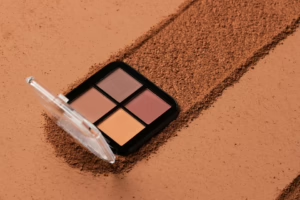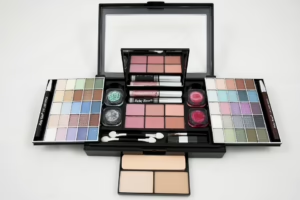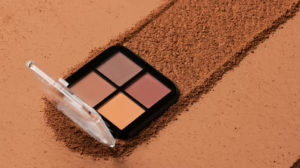Sustainable Beauty: How Dermatology Is Embracing Eco-Friendly Practices
In recent years, the beauty industry has witnessed a noticeable shift towards sustainability. With increased awareness of environmental issues and consumer demands for eco-friendly products, dermatology is increasingly incorporating sustainable practices into its realm. This article explores the various ways dermatology is embracing sustainability, the importance of eco-friendly practices in skincare, and some innovative advancements and solutions emerging within the field.
Understanding Sustainable Beauty
Sustainable beauty refers to the production and consumption of beauty products in a way that is environmentally friendly and socially responsible. This concept encompasses a broad spectrum of practices, including the sourcing of natural ingredients, the use of sustainable packaging, and methodologies that do not harm wildlife or ecosystems. Sustainable beauty also means ensuring that products are not harmful to human health and that they function effectively in meeting consumer needs.
The beauty industry is one of the largest global markets, estimated at over $532 billion. As this expansive sector continues to grow, the environmental impact posed by traditional practices cannot be overlooked. From plastic waste and water usage to harmful chemicals in products, the need for a sustainable overhaul is pressing. As a result, dermatology—an integral facet of the beauty industry—is redefining its commitment to sustainable practices.
The Dermatology Landscape: A Need for Change
Traditionally, dermatology has intersected with beauty primarily through cosmetic dermatology procedures, which have often relied on chemical ingredients and processes that are not always eco-friendly. The use of these ingredients can contribute to significant waste and environmental harm. However, a rising awareness of conscious consumerism has led dermatologists and beauty brands to reevaluate their practices and ingredients.
Ingredients Matter
Historically, many topical dermatological treatments have relied heavily on synthetic chemicals. These substances, while effective, may carry risks not only for individual users but also for the environment. For instance, parabens and sulfates can disrupt aquatic life when washed down the drain. Therefore, dermatologists are increasingly steering consumers toward products containing natural, organic ingredients that are less likely to cause harm.
Natural Ingredients and Botanical Extracts
The shift towards natural ingredients is evident in numerous dermatological formulations available today. Ingredients like Aloe Vera, green tea, and chamomile are being used not only because of their effectiveness in addressing skin conditions but also due to their eco-friendly profiles. These natural alternatives often require less intensive farming practices—thereby reducing the carbon footprint associated with their production.
In addition, sourcing practices are becoming more transparent; dermatologists are now inclined to work with brands that prioritize sustainability by sourcing their ingredients ethically and sustainably. This inclusion of transparency fosters trust between consumers and dermatological specialists.
Eco-Friendly Packaging Solutions
The sustainability conversation within dermatology is not limited to ingredients alone; packaging plays a significant role as well. Much of the beauty industry has historically relied on single-use plastics (bottles, tubes, and jars), contributing significantly to global plastic waste. However, dermatology is undergoing a transformation that emphasizes eco-friendly packaging options.
Recyclable and Reusable Materials
Many brands are transitioning to recyclable and biodegradable materials for their packaging. Companies are innovating with alternatives like glass, metal, and even biodegradable plastics. Dermatologists are increasingly encouraging consumers to favor these products, suggesting that they play an essential role in supporting a sustainable beauty market.
Refill Programs
A notable trend in eco-friendly packaging is the introduction of refill programs. Brands motivate consumers to return used containers for refills in exchange for discounts, fostering a culture of reuse and reducing waste accumulation. Dermatologists can advocate for these practices as part of their skincare recommendations, demonstrating the importance of sustainable choices in overall beauty routines.
Water Conservation in Dermatology
Water is a precious yet often overlooked resource when it comes to beauty and skincare. The skincare industry has long struggled with water-intensive production processes. Dermatology is beginning to take steps to minimize water usage in various ways.
Waterless Products
One prominent advancement is the emergence of waterless beauty products. These formulations focus on creating potent formulations without the need for water as a primary ingredient. By doing so, the overall water footprint involved in the production and distribution of these products is significantly reduced.
Dermatologists are well-positioned to educate patients about the benefits and efficacy of waterless products, providing insights into how these solutions can effectively cater to specific skin concerns without requiring substantial water usage.
Educating Patients on Offsetting Water Usage
In addition to endorsing waterless products, dermatologists can help patients understand their water usage habits. By recommending simple practices, such as shorter showers or using a cup to rinse during cleansing, dermatologists can play a crucial role in promoting water conservation.
Harnessing Technology for Sustainable Solutions
Technology is increasingly becoming a partner in the journey toward sustainability in dermatology. From eco-friendly product formulation to innovative packaging solutions, advancements in technology are rendering many processes more sustainable.
Biodegradable Alternatives Through Biotechnology
Biotechnology is emerging as a foolproof solution in the skincare realm. Researchers are now able to create biodegradable ingredients that retain the efficacy of synthetic compounds but do not pose the same environmental risks. This innovation could change the landscape of dermatology by providing effective treatments that are also aligned with eco-friendly principles.
Data Analytics & Sustainable Practices
Data-driven approaches can also contribute to sustainability within dermatology. By leveraging analytics, dermatologists can gain insights into consumer preferences, behavior, and the environmental impact of specific products. This data can allow practitioners and brands to craft tailored solutions that are both effective and sustainable.
Teledermatology
Teledermatology has also gained traction as a means of reducing the environmental footprint. By providing virtual consultations, dermatologists can lessen the carbon emissions associated with travel and in-office visits. Patients can receive professional advice without adding to their carbon footprint, demonstrating a modern approach to healthcare delivery in dermatology.
The Role of Consumer Advocacy
The responsibility of fostering sustainable beauty practices does not rest solely on the shoulders of dermatologists and beauty brands; consumers also play a substantial role. A growing number of consumers are demanding eco-conscious products and practices. This advocacy leads to a cultural shift within the beauty industry and dermatology.
The Impact of Social Media
Social media has become a powerful tool for advocacy and education regarding sustainability in beauty. Consumers are increasingly looking to online platforms to discover sustainable and eco-friendly products. Dermatologists can leverage these channels, sharing insights and endorsing brands committed to environmentally friendly practices.
Grassroots Movements & Collaborations
Efforts at a grassroots level can amplify the sustainability message. When dermatologists work with local and global organizations that prioritize ecological responsibility, they can create a more unified, impactful movement. Collaborative efforts can lead to large-scale initiatives promoting sustainable dermatological practices.
The Future of Sustainable Dermatology
As we look toward the future, the transition towards sustainable beauty within dermatology appears promising. The continued commitment to eco-friendly practices from both dermatologists and brands will undoubtedly reshape consumer perspectives and choices.
The Customer-Brand Relationship
Brands that prioritize sustainability will likely forge deeper connections with consumers. Transparency about ingredient sourcing, manufacturing practices, and packaging can lead to increased trust and loyalty among consumers. Dermatologists can serve as advocates for these brands, steering patients toward products that align with sustainable principles.
Continuous Research and Innovation
The focus on sustainability should also stimulate ongoing research and innovation within dermatology. As new eco-friendly ingredients and methods are discovered, practices will continue to evolve and adapt to meet both consumer needs and environmental responsibilities. This dynamic environment allows dermatology to lead in establishing sustainable beauty standards.
Policy and Regulation
Government regulation also plays an influential role in driving sustainable practices within dermatology. By instituting guidelines and policies aimed at reducing the environmental impact of the beauty industry, authorities can bolster the move towards eco-friendly practices and ensure a healthier future for coming generations.
Conclusion
The convergence of dermatology and sustainability offers a vital opportunity to promote eco-friendly practices in beauty. By harnessing nature-inspired ingredients, minimizing waste, and becoming advocates for consumer education, dermatologists can help shape a more conscious approach to beauty.
As the demand for sustainable practices continues to rise, both dermatologists and beauty brands have the responsibility to advocate for ecological responsibility. This mutual commitment not only benefits the environment but also enhances the overall health and wellbeing of consumers. As we look ahead, sustainability in dermatology will likely become a standard practice rather than an exception—a necessary evolution in the beauty industry for a healthier planet and a healthier you.


























Add Comment